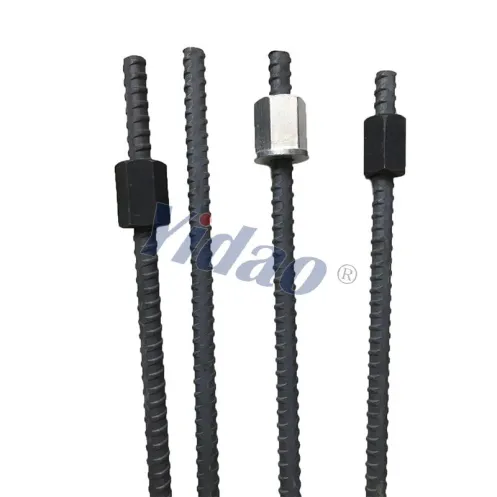The Benefits of Using Threaded Bars in Structural Engineering
Threaded bars, also known as threaded rods or threaded studs, are essential components in structural engineering and construction. These bars are long, straight metal rods with threads along their length, providing numerous advantages that make them valuable in various applications. Here are the key benefits of using threaded bars in structural engineering:

1. High Strength and Load Capacity:
Threaded bars are typically made from high-strength materials such as steel or stainless steel. This gives them exceptional load-carrying capacity and tensile strength, making them suitable for applications that require robust structural connections and reinforcements.
2. Versatility and Customization:
Threaded bars are available in various diameters, lengths, and thread configurations. This versatility allows engineers to customize the bars to specific project requirements, ensuring optimal performance and fit in different construction scenarios.
3. Easy Installation:
The threaded design of these bars simplifies installation, as they can be easily inserted into pre-drilled holes or used with nuts and washers to secure connections. This ease of installation saves time and labor during construction, leading to increased project efficiency.
4. Corrosion Resistance:
Threaded bars made from stainless steel or other corrosion-resistant materials offer enhanced protection against rust and degradation, especially in outdoor or corrosive environments. This corrosion resistance ensures the longevity and durability of structural connections.
5. Stability and Reliability:
Threaded bars create secure and stable connections, reducing the risk of structural failure due to movement or displacement. These bars are commonly used in tension applications, where their reliable performance is critical for structural integrity.
6. Reinforcement and Strengthening:
In retrofitting or structural reinforcement projects, threaded bars are often used to connect new components to existing structures. Their high-strength properties make them ideal for reinforcing structures or adding new elements without compromising the overall stability.
7. Cost-Effectiveness:
Using threaded bars can be cost-effective in comparison to other connection methods. Their ease of installation and ability to be customized to project needs contribute to cost savings in construction projects.
8. Seismic Performance:
In earthquake-prone regions, threaded bars play a vital role in enhancing the seismic performance of structures. They help distribute forces and resist lateral movements, improving the overall resilience of buildings and infrastructure.
9. Aesthetic Considerations:
Threaded bars can also serve aesthetic purposes in architectural design. Exposed threaded rods with decorative nuts can add an industrial or modern look to the structure, creating visually appealing elements.
10. Sustainability:
Using threaded bars in construction projects aligns with sustainable building practices. The durability and long lifespan of these bars contribute to reducing the need for frequent replacements, minimizing waste and resource consumption.
In conclusion, threaded bars offer numerous advantages in structural engineering and construction. Their high strength, load capacity, ease of installation, corrosion resistance, and versatility make them essential components for creating secure and reliable connections in various projects. Whether used for reinforcing existing structures, strengthening new constructions, or improving seismic performance, threaded bars play a crucial role in enhancing the safety, stability, and longevity of buildings and infrastructure.
185
0
0


Comments
All Comments (0)